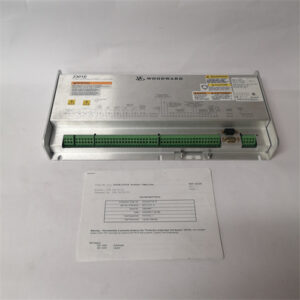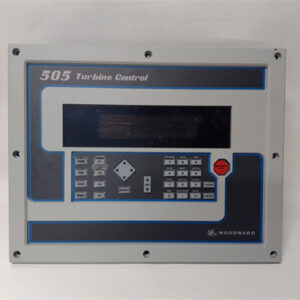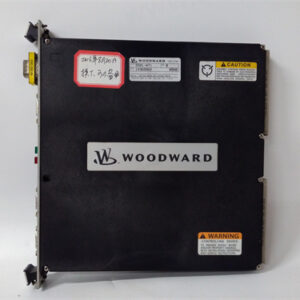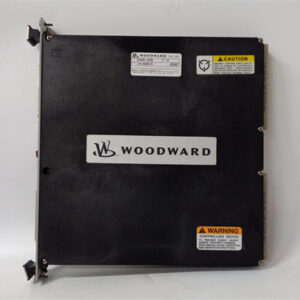الوصف
The Woodward 8280-4082 is a specific part number that identifies a LECM (Large Engine Control Module) E6 Generic Control. It’s a sophisticated electronic control unit designed for comprehensive management of large industrial internal combustion engines. This particular variant is described as a 2-stack module focusing on Protection/I/O.
WOODWARD 8280-4082: LECM E6 Generic Control (2-Stack: Main / AUX Protection/IO Module)
The Woodward 8280-4082 is a high-performance Large Engine Control Module (LECM) within Woodward’s E6 platform. These modules are specifically designed to meet the demanding requirements of large industrial engines, providing comprehensive control over various engine parameters for optimal performance, efficiency, and reliability.
Product Overview
- Product Type: Large Engine Control Module (LECM) / Electronic Control Unit (ECU)
- Manufacturer: Woodward
- Series: E6 / LECM
- Function: This configuration is a “Generic Control” in a “2-Stack” modular system. This means it comprises a Main module and an additional Auxiliary (AUX) Protection/IO Module stacked together. Its key capabilities are centered around providing robust general-purpose inputs and outputs and protection functions for the engine.
- Configuration:
- 2-Stack: Indicates a modular system with a main control module and one additional specialized module.
- Main / AUX Protection/IO Module: The main module provides core control, while the auxiliary module expands its capabilities with additional I/O and specific protection features.
- Key Capabilities for 8280-4082: This specific model is configured with a set of versatile I/O, often for general engine monitoring and control:
- 16 Channels of Slow 4–20mA Inputs: These are typically used for monitoring various engine parameters that change at a slower rate, such as oil pressure, fuel pressure, coolant temperature, or intake manifold pressure. The 4–20mA signal is a robust industrial standard.
- 8 Channels of Thermocouple (T/C) Inputs: These are essential for monitoring high temperatures, most commonly individual cylinder exhaust gas temperatures (EGTs). EGT monitoring is vital for cylinder balancing, detecting misfires, and diagnosing combustion issues.
Detailed Description
The Woodward LECM series, including the 8280-4082, offers a powerful and flexible control platform for large engine applications.
Key characteristics of the 8280-4082:
- Advanced Hardware Architecture: It features a robust processor and extensive I/O capabilities to support complex engine control strategies.
- Modular Design: The “2-Stack” configuration highlights its expandability and specialization. By combining different modules, the LECM system can be precisely tailored to provide the necessary control and diagnostic capabilities for various engine sizes and complexities. The inclusion of numerous analog and thermocouple inputs makes it suitable for comprehensive engine monitoring.
- Comprehensive Engine Control Integration: This unit integrates seamlessly with other Woodward components (such as actuators and fuel metering devices) to form part of a complete engine management system. This includes control of speed, load, air/fuel ratio, diagnostics, and critical engine protection functions.
- General Purpose I/O: The slow 4–20mA inputs and thermocouple inputs make this module well-suited for a wide range of monitoring and protection tasks, ensuring the engine operates within safe limits.
- Communication: LECM modules typically offer a variety of robust communication ports, including Ethernet (for service interface, HMI/PLC integration using Modbus TCP/IP, remote diagnostics, and IIoT capabilities), CAN (for reliable communication with other engine components and external systems like J1939), and Modbus (for integration with SCADA or plant control systems).
- Rugged Design: It’s built to withstand the extreme environmental conditions typically found in engine rooms, including high vibrations and wide temperature ranges, ensuring long-term reliability in demanding industrial settings.
Applications
The Woodward 8280-4082 LECM E6 Generic Control is primarily used in applications involving large reciprocating engines where comprehensive monitoring, general control, and engine protection are critical:
- Power Generation: For engine-driven generator sets (gensets) where robust control and monitoring of various engine parameters are needed for reliable operation.
- Oil & Gas: For engines driving compressors in pipeline applications or pumps in upstream/midstream operations, where continuous performance and fault detection are essential.
- Industrial Applications: In large industrial prime movers for various processes that require versatile I/O for integrating with plant systems and maintaining operational safety.
- Basic Engine Control: Where sophisticated lean-burn or rich-burn specific features (like advanced knock or RTCDC) aren’t the primary requirement, but solid general engine management and protection are.
Compatibility and Replacement Notes
It’s important to note the current status of the 8280-4082:
- Obsolescence: The 8280-4082 belongs to the 723, 723+, and 828 product line, which Woodward has officially inactivated (End-of-Life). This decision was made due to component obsolescence. This means direct sales and new production of the 8280-4082 are discontinued. While limited repairs might have been supported based on parts availability until September 2024, as of July 2025, this support period has likely ended or is extremely limited.
- Replacement: Woodward offers newer product lines as replacements for the 723, 723+, and 828 platforms. These typically include:
- LECM SA (Stand-Alone) Main board variant: This is the modern, powerful base unit, which can be expanded with additional I/O modules to match or exceed the functionality (including the analog and thermocouple inputs) of the 8280-4082.
- Flex500: A highly flexible and modern control platform that can support extensive I/O and custom control logic.
- 2300E: Another electronic control option that may be suitable depending on the specific application requirements for general I/O and control.

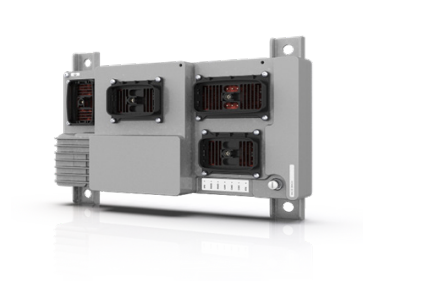

 +86 15340683922
+86 15340683922 +86 15340683922
+86 15340683922